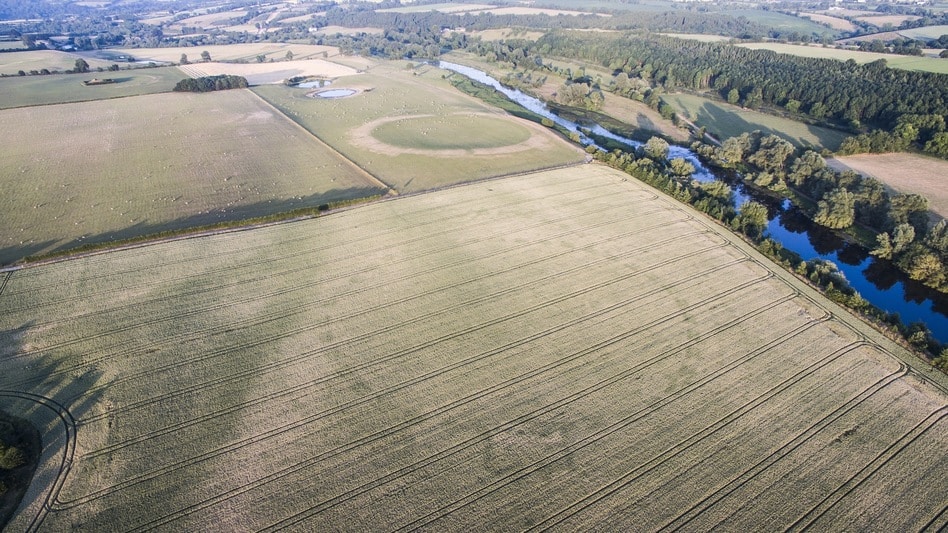With the northern hemisphere’s scorching weather stretching from weeks to months, remnants of the past are revealing themselves across the Boyne Valley in the Brú na Bóinne UNESCO world heritage site, in Ireland’s County Meath.
Drought-like conditions have uncovered an unknown henge, stretching 200m in diameter and 750m from the famous Newgrange monument. The dry weather has caused deeper grooves and rivulets beneath the ground.
The henge is thought to date back to the Neolithic period, up to the Bronze Age from around 3,000 BCE. Anthony Murphy is responsible for the discovery, which is being hailed as completely new and very significant by archeologists. Murphy is a journalist and researcher responsible for Mythical Ireland, a blog about Ireland’s ancient megalithic sites.
“You probably will not see cropmarks as well-defined as that in a generation,” says Stephen Davis, a professor of archaeology at University College Dublin. The discovery is part of a cluster of henges and passage tombs in the Boyne Valley. Thanks to LiDAR scanning, Davis has almost doubled the number of known monuments since 2010.
This landscape is known for its passage tombs which were built from around 3,600 until 3,100 BCE during the middle Neolithic period.
The henge would have been made from timber with two concentric circles, which would have possibly been ‘linteled’ with horizontal supports. “This is a time period where they’re building particularly in timber and earth, as opposed to stone which went before,” Davis says.
“We have this bizarre broken ditch, which we don’t really necessarily understand yet and that’s the most unusual thing about it,” Davis says. This ditch is causewayed, broken into lots of little bits, forming a “permeable boundary” meaning it’s not a form of defense. Although there are discernible entries and exits, you could in theory enter the structure at any point. “It makes it much more like a symbolic enclosure, rather than a real enclosure.”
This suggests that the henge would have been used for ritual ceremonies involving feasting, gathering and trading. There is a lot of evidence of feasting on animals at Durrington Walls within the Stonehenge landscape of England and these are sometimes known as passing enclosures, where people would congregate during the changing of the seasons.
“I’m still struggling to take it in – the enormity of it,” says Murphy. “It’s almost overwhelming. I’m delighted to have been involved in the discovery of it, I’m really excited about the research into and seeing how this story progresses from here.”
